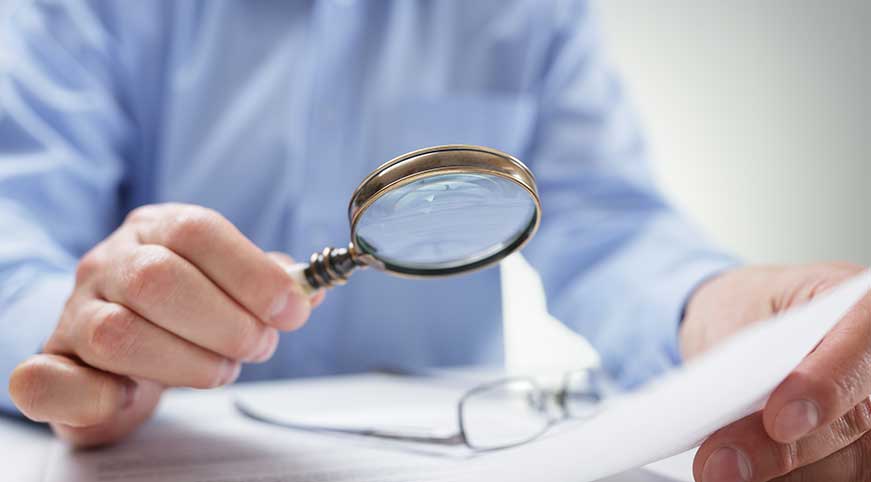Posted by Divya Sathyanarayanan
Low vision is a vision problem which affects millions of Americans—especially older adults—and impacts our daily life. According to the National Eye Institute, over 135 million people across the globe suffer from this condition. Understanding the symptoms, causes, and preventive measures can help you protect your eyesight—one of your most important senses. We sat with Dr. Ora Esfahani, Director of Optometric Services at Southern California Eye Institute, CHA HPMC’s premier eye institute, to understand the condition and ways to keep your vision healthy.
What is low vision?
Low vision is defined as a vision of 20/70 or worse in the better-seeing eye. This condition, usually caused by eye disease, cannot be treated by surgeries or conventional corrective lenses. Having low vision can impact your ability to do daily activities such as reading, watching TV, or cooking.
What causes low vision?
It can be caused by a number of eye diseases like glaucoma, macular degeneration, diabetes, retinal detachment, and various other genetic or congenital diseases. This type of vision loss can also be a result of trauma to the eye.
What are the symptoms?
Symptoms of low vision include blurry or hazy vision, peripheral vision loss (missing portions of your side vision or “tunnel vision”), central vision loss (blind spots), and/or difficulty seeing in poor lighting conditions. Difficulty with contrast can cause problems with driving and sensitivity to light.
Are any particular age-groups more vulnerable to this condition?
Low vision generally affects older populations (60 and above) and is usually a result of chronic disease. However, congenital diseases can affect younger patients as well, and certain conditions can begin to affect patients starting at 50 years of age.
When should you visit an optometrist?
We recommend everyone to get their eyes checked once a year. If you are already diagnosed with an eye disease, you will have more frequent check-ups (every 3 to 6 months). If you are noticing sudden loss of vision or changes to how you normally see, we recommend you to get your vision examined by an optometrist or ophthalmologist. Seeing your eye doctor is important because they can find ways to help you cope and treat possible causes of vision problems. Conditions such as cataracts can sometimes be easily managed with a new pair of glasses or a small surgery. Other problems, such as diabetic retinopathy might need more frequent treatment, including injections of medication to treat the retina (the back part of the eye). It is important to evaluate the treatment options before resorting to non-optical visual aids or other coping treatments for low vision. We want to prevent the onset of low vision, so it’s important to get your eyes checked regularly to identify any problems that could arise later in life.
How do you evaluate and treat patients with low vision?
When patients have poor vision, they will have difficulty moving around the house or performing daily activities and important tasks, which can significantly decrease their quality of life. Low vision specialists can provide special care to help them with their daily life. Along with a pair of glasses, this can include devices such as telescopes and magnifiers to help them see. We highly recommend being followed by their eye doctor to continue any and all treatments necessary to prevent blindness. This can occur as often as every three months, depending on the disease.
What are some general health tips to maintain healthy eyesight?
Keeping your eyes healthy is as important as taking care of the rest of your body. Some general tips include:
- Maintaining a healthy diet (lots of green, leafy vegetables like kale and spinach)
- Exercising regularly
- Drinking lots of water to keep your body hydrated
- Wearing UV protection when out in the sun
- Getting comprehensive eye exams to protect your eyes and detect any underlying conditions
- Quit and/or avoid smoking
- Seeing your primary care provider regularly to monitor for common systemic diseases (such as hypertension, diabetes, or high cholesterol)
SCEI provides the highest level of vision care in a state-of-the-art facility. With the aim to provide quality eye care across southern California, SCEI has expanded its operations with new satellite clinics in Bakersfield, Pasadena, and Encino. Make an appointment by visiting www.sceyes.org or call 1-833-270-EYES (3937).
Go to our Blog
 ENGLISH
ENGLISH KOREAN
KOREAN Spanish
Spanish RUSSIAN
RUSSIAN Armenian
Armenian FILIPINO
FILIPINO Chinese (Simplified)
Chinese (Simplified) Chinese (Traditional)
Chinese (Traditional)

최신댓글